


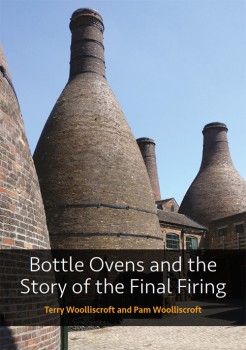
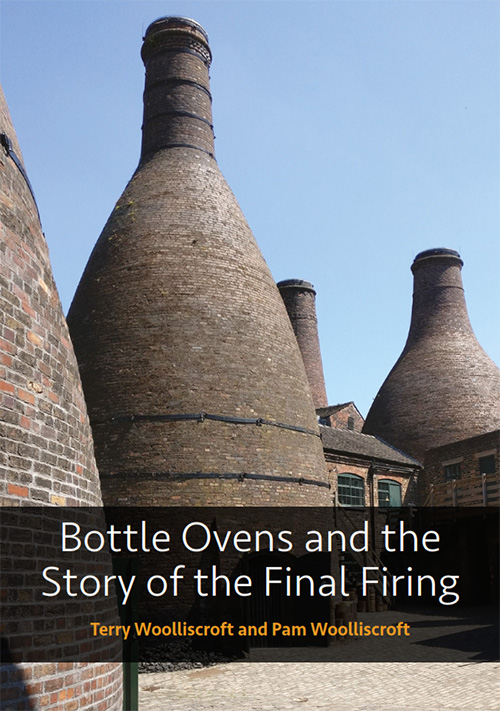 Note about the book: In 1978 Gladstone Pottery Museum in Stoke-on-Trent had the audacious idea of firing a potters' bottle oven, with coal, for the very last time. This traditional way of firing pottery had ended in the early 1960s with the introduction of the Clean Air Act. Before all the knowledge and skills of firing a bottle oven were consigned to history the museum embarked on a project which proved to be an enormous undertaking, massively complex and tremendously daunting. This book, published in the 40th anniversary year, tells the story of The Last Bottle Oven Firing.
Note about the book: In 1978 Gladstone Pottery Museum in Stoke-on-Trent had the audacious idea of firing a potters' bottle oven, with coal, for the very last time. This traditional way of firing pottery had ended in the early 1960s with the introduction of the Clean Air Act. Before all the knowledge and skills of firing a bottle oven were consigned to history the museum embarked on a project which proved to be an enormous undertaking, massively complex and tremendously daunting. This book, published in the 40th anniversary year, tells the story of The Last Bottle Oven Firing.
Part 1 answers the question 'What is a bottle oven?'
Part 2 details the 1978 final firing with contemporary reports and previously unseen images.
Part 3 is a bottle oven dictionary explaining some of the unusual words specific to bottle ovens and the pottery industry.
Note about the authors: Terry Woolliscroft has a degree in ceramic technology and trained in commercial pottery manufacture at Josiah Wedgwood & Sons Ltd., Barlaston. His interest in bottle ovens developed quickly as a youth when he saw these remarkable buildings rapidly disappearing from The Potteries skyline. He photographed many potbanks before they were demolished. He joined Gladstone Pottery Museum as a volunteer and worked on the Potteries Bottle Oven Survey of 1976. He was a member of the team which organised the Last Bottle Oven Firing of 1978 and worked throughout making an audio record and logbook of the event. He also shovelled coal! He has created several websites including The Potteries Bottle Oven, The Last Bottle Oven Firing, The Gladstone Pottery Museum Story and The Potbank Dictionary.
Pam Woolliscroft (née Bott) has enjoyed a career in Stoke-on-Trent museums, working at Gladstone Pottery Museum, Chatterley Whitfield Mining Museum, Ford Green Hall and the Spode Museum. With her background in ceramic history she has worked as a consultant with specialist archives and museums and also for ArtUK. She began her museum work as a volunteer at Gladstone Pottery Museum eventually becoming curator under the leadership of David Sekers. She was a member of the team which organised the Last Bottle Oven Firing 1978 and became the key link between museum staff and over 70 volunteers. Pam kindled the first firemouth of the final firing. She has created the Spode History and Spode ABC websites and works as a volunteer at Stoke-on-Trent City Archives.
Quote from Angela Lee, Manager, Gladstone Pottery Museum, 2018 Echoes of the Last Bottle Oven Firing: The Last Bottle Oven Firing was one of the most important events in the history of Gladstone Pottery Museum with significant and lasting effects over the 40 years since that amazing achievement. The information recorded plus practical skills and knowledge gained by the volunteers who worked on the project is invaluable. It has continually informed the ways the museum can help visitors to understand coal-fired bottle ovens. It has also made a lasting impression on those who witnessed the event. Almost every day there will be a visitor to the museum sharing their memories of that special time. Gladstone Pottery Museum will forever be grateful for the vision, determination, organisational skills and hard work which created the Last Bottle Oven Firing.
Quotes from the book about Bottle Ovens
"09:50 Saturday 26 August 1978 Eight placers start placing ware into saggars. Full saggars taken to the oven to be set in. Arch bungs, between the bags, at the back of the oven, were set in first.
"12:37 Tuesday 29 August 1978. Kindling started. Eight firemouths set alight using flaming newspaper or a specially made flaming taper. Each firemouth was kindled in turn. Firemouth No.1 kindled by Pam Bott (Gladstone Pottery Museum Curator/member of Organising Committee). The crowd gave a spontaneous round of applause." The final firing on its way.
"Based on the measurement of the Bullers rings, years of experience and just gut feel Alfred Clough, the fireman, decided on making just one more baiting - No.9. "We need a big one," he said. "Have we got plenty of fuel in? Get everybody ready."
"Removing the clammins was quite a spectacle. Sparks flew from inside the oven suggesting the inside was under pressure. It was a carnival atmosphere. Oohs and aahs were heard and children shouted with glee."
"The oven grumbled as it cooled. The structure which had remained idle for many years had been brought to life by fire and had coped well with the inevitable expansion of brickwork and bonts. But as cooling and shrinkage took over it struggled once more with the movement of brick against brick, groaning as it returned to its normal size."
"Bottle Ovens - Out of the filth came great beauty. From these curious brick-built and iron-strapped structures came the most exquisite, delicate and utterly beautiful pottery in the world."
Published by Gladstone Pottery Museum, Uttoxeter Road, Longton, Stoke-on-Trent, ST3 1PQ, England
ISBN 978 0 9505411 3 6
Date of publication: 1 August 2018
£9.95
60 pages. Perfect bound. Portrait style 11.7 x 8.3 inches (A4) Over 25,000 words. Over 140 illustrations.
Available from the Gladstone Pottery Museum shop by phone, please call +44 1782 237777
Produced with the generous support of the Friends of the Potteries Museums & Art Gallery
Rich with content for ceramic collectors, researchers, authors, curators, and historic archaeologists, the sites are sure to deliver value for their visitors. The exhibition’s curators continue to enhance them and, now, with site application upgrades, including a new magnification feature and upgraded content management capabilities, the TCC and its collaborators are pleased to relaunch these exhibits, all free to a worldwide audience.
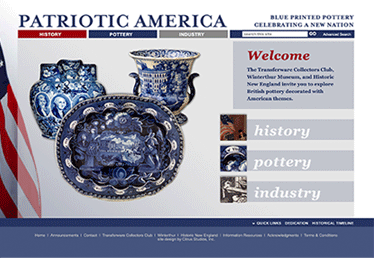
Branded Patriotic America, debuted in 2014 in collaboration with Historic New England, and the Winterthur Museum
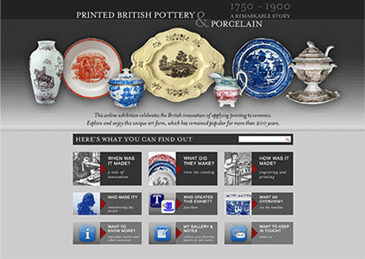
Launched in 2015 in partnership with the Northern Ceramic Society.
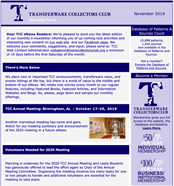 Not a member but want to receive email updates?
Not a member but want to receive email updates?